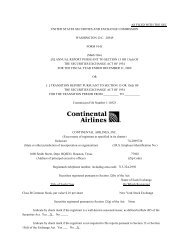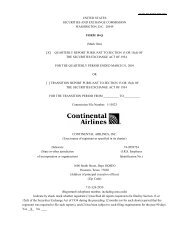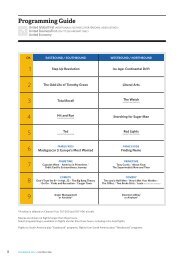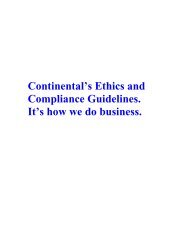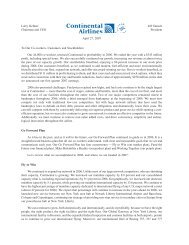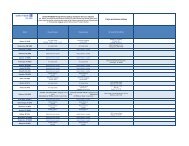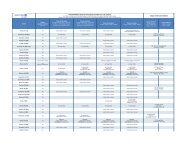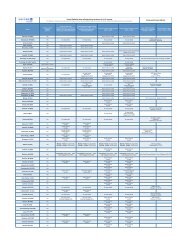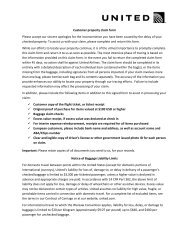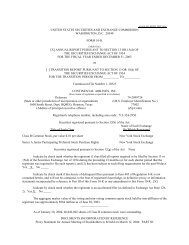ACAA Final Rule.pdf - United Airlines
ACAA Final Rule.pdf - United Airlines
ACAA Final Rule.pdf - United Airlines
Create successful ePaper yourself
Turn your PDF publications into a flip-book with our unique Google optimized e-Paper software.
23<br />
(1) On-board wheelchairs must include footrests, armrests which are movable or removable, adequate occupant<br />
restraint systems, a backrest height that permits assistance to passengers in transferring, structurally sound handles<br />
for maneuvering the occupied chair, and wheel locks or another adequate means to prevent chair movement during<br />
transfer or turbulence.<br />
(2) The chair must be designed to be compatible with the maneuvering space, aisle width, and seat height of the<br />
aircraft on which it is to be used, and to be easily pushed, pulled, and turned in the cabin environment by carrier<br />
personnel.<br />
(d) As a foreign carrier, you must meet this requirement as of May 13, 2010. As a U.S. carrier, you must meet this<br />
requirement by May 13, 2009.<br />
§382.67 What is the requirement for priority space in the cabin to store passengers’ wheelchairs?<br />
(a) As a carrier, you must ensure that there is a priority space in the cabin of sufficient size to stow at least one<br />
typical adult-sized folding, collapsible, or break-down manual passenger wheelchair, the dimensions of which are<br />
within a space of 13 inches by 36 inches by 42 inches without having to remove the wheels or otherwise<br />
disassemble it. This requirement applies to any aircraft with 100 or more passenger seats; and<br />
(b) This space must be other than the overhead compartments and under-seat spaces routinely used for passengers’<br />
carry-on items.<br />
(c) As a foreign carrier, you must meet the requirement of paragraph (a) of this section for new aircraft ordered after<br />
May 13, 2009 or delivered after May 13, 2010. As a U.S. carrier, this requirement applies to you with respect to<br />
new aircraft you operate that were ordered after April 5, 1990, or which were delivered after April 5, 1992.<br />
§382.69 What requirements must carriers meet concerning the accessibility of videos, DVDs, and other<br />
audio-visual presentations shown on- aircraft to individuals who are deaf or hard of hearing?<br />
(a) As a carrier, you must ensure that all new videos, DVDs, and other audio-visual displays played on aircraft for<br />
safety purposes, and all such new audio-visual displays played on aircraft for informational purposes that were<br />
created under your control, are high-contrast captioned. The captioning must be in the predominant language or<br />
languages in which you communicate with passengers on the flight.<br />
(b) The requirements of paragraph (a) of this section go into effect with respect to audio-visual displays used for<br />
safety purposes on November 10, 2009.<br />
(c) Between May 13, 2009 and November 9, 2009, U.S. carriers must ensure that all videos, DVDs, and other<br />
audio-visual displays played on aircraft for safety purposes have open captioning or an inset for a sign language<br />
interpreter, unless such captioning or inset either would interfere with the video presentation so as to render it<br />
ineffective or would not be large enough to be readable, in which case these carriers must use an equivalent nonvideo<br />
alternative for transmitting the briefing to passengers with hearing impairments.<br />
(d) The requirements of paragraph (a) of this section go into effect with respect to informational displays on January<br />
8, 2010.<br />
§382.71 What other aircraft accessibility requirements apply to carriers?<br />
(a) As a carrier, you must maintain all aircraft accessibility features in proper working order.



